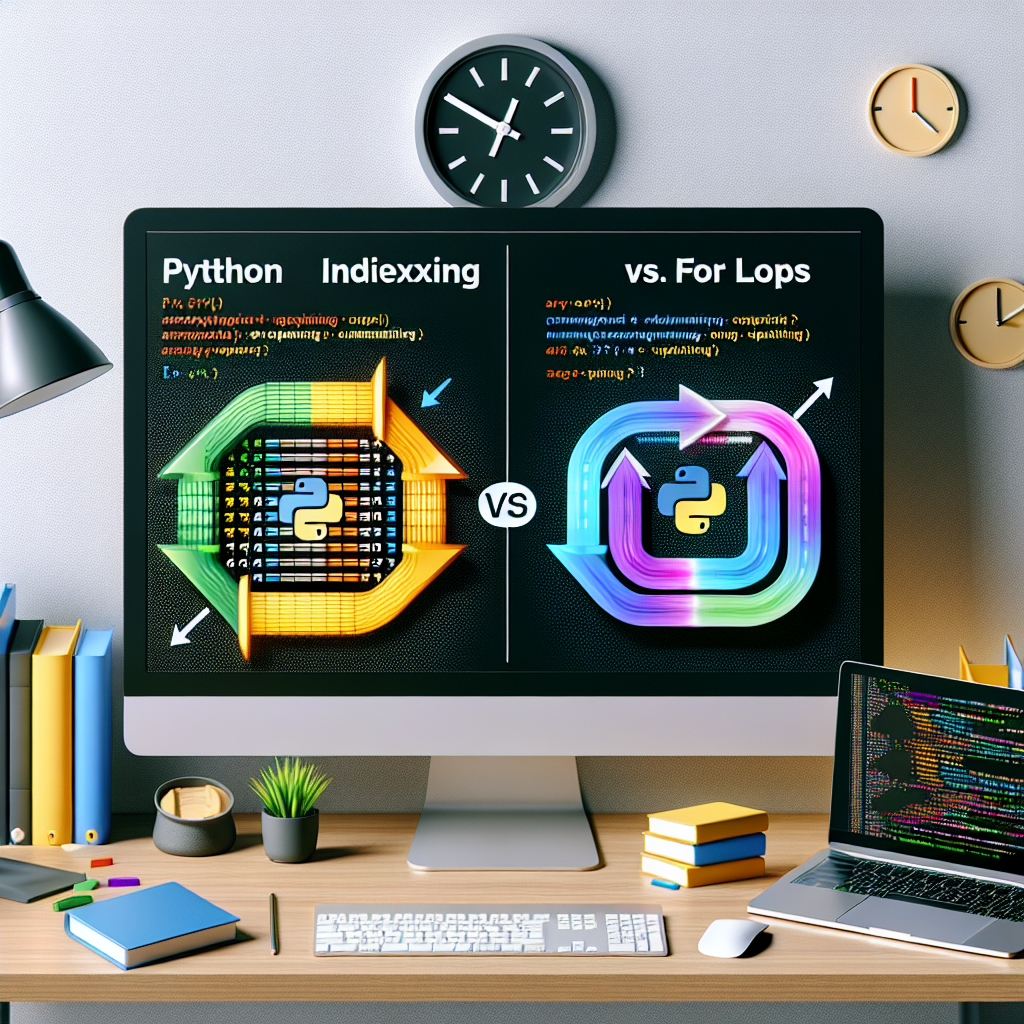Python Indexing vs. For Loops: What’s Really Faster?
When it comes to optimizing code performance in Python, the debate between using indexing and for loops is a common one among developers. Both methods have their strengths and weaknesses, but which one is truly faster in practice? Let’s delve into this topic to uncover the nuances that can impact your code’s efficiency.
Understanding Python Indexing:
Python indexing allows you to access elements in a sequence, such as a list or a string, by their position. For example, if you have a list `my_list = [1, 2, 3, 4, 5]`, accessing the third element would be done by `my_list[2]`. Indexing provides a direct way to retrieve specific elements without iterating through the entire sequence.
The Power of For Loops:
On the other hand, for loops in Python are versatile constructs that iterate over a sequence of elements. They are commonly used to perform operations on each item in a list, tuple, or other iterable objects. For loops offer flexibility and readability in your code, making them a popular choice for many developers.
Performance Comparison:
In terms of performance, the choice between indexing and for loops can significantly impact the speed of your code, especially when dealing with large datasets. While indexing allows direct access to elements, reducing the need for iteration, for loops provide a more structured approach to processing data.
Benchmarking with Real-world Examples:
Let’s consider a scenario where we want to find the sum of all elements in a large list. We can compare the execution times using indexing and for loops to see which method performs better. Here’s a simple implementation using both approaches:
“`python
Using Indexing
my_list = [i for i in range(1000000)]
sum_using_indexing = sum(my_list)
Using For Loop
sum_using_for_loop = 0
for num in my_list:
sum_using_for_loop += num
“`
By measuring the execution times of these two methods, you can observe the practical implications of choosing between indexing and for loops in your code. This experiment can provide valuable insights into the efficiency of each approach based on your specific use case.
Optimizing Your Code:
In many cases, the choice between indexing and for loops may come down to personal preference or the readability of your code. However, when performance is a critical factor, conducting benchmarks and analyzing the impact of each method can help you make informed decisions to optimize your code.
Conclusion:
In the eternal debate of Python indexing versus for loops, there is no definitive answer as to which method is faster. The efficiency of your code depends on various factors, including the size of your dataset, the complexity of operations, and the specific requirements of your application. By experimenting with both approaches and considering the context of your code, you can determine the most suitable method for your development needs.
In conclusion, the key takeaway is to understand the strengths and limitations of Python indexing and for loops, and to leverage this knowledge to write efficient and effective code. Whether you opt for the direct access of indexing or the structured iteration of for loops, the goal remains the same: to enhance the performance and readability of your Python programs.
So, the next time you find yourself at a crossroads between indexing and for loops in Python, remember to weigh the trade-offs and choose the approach that best aligns with your coding objectives. Happy coding!
—
Keywords: Python, indexing, for loops, code performance, efficiency, optimization, data processing, Python developers, Python programming, Python lists, Python speed optimization.

